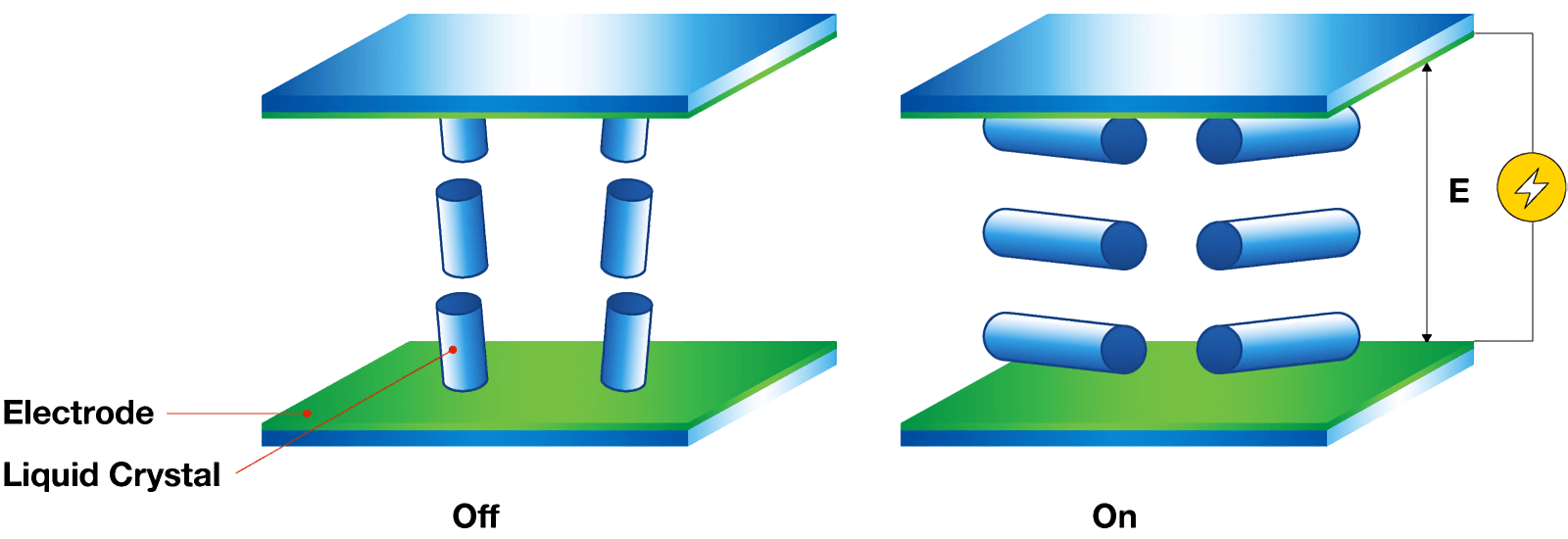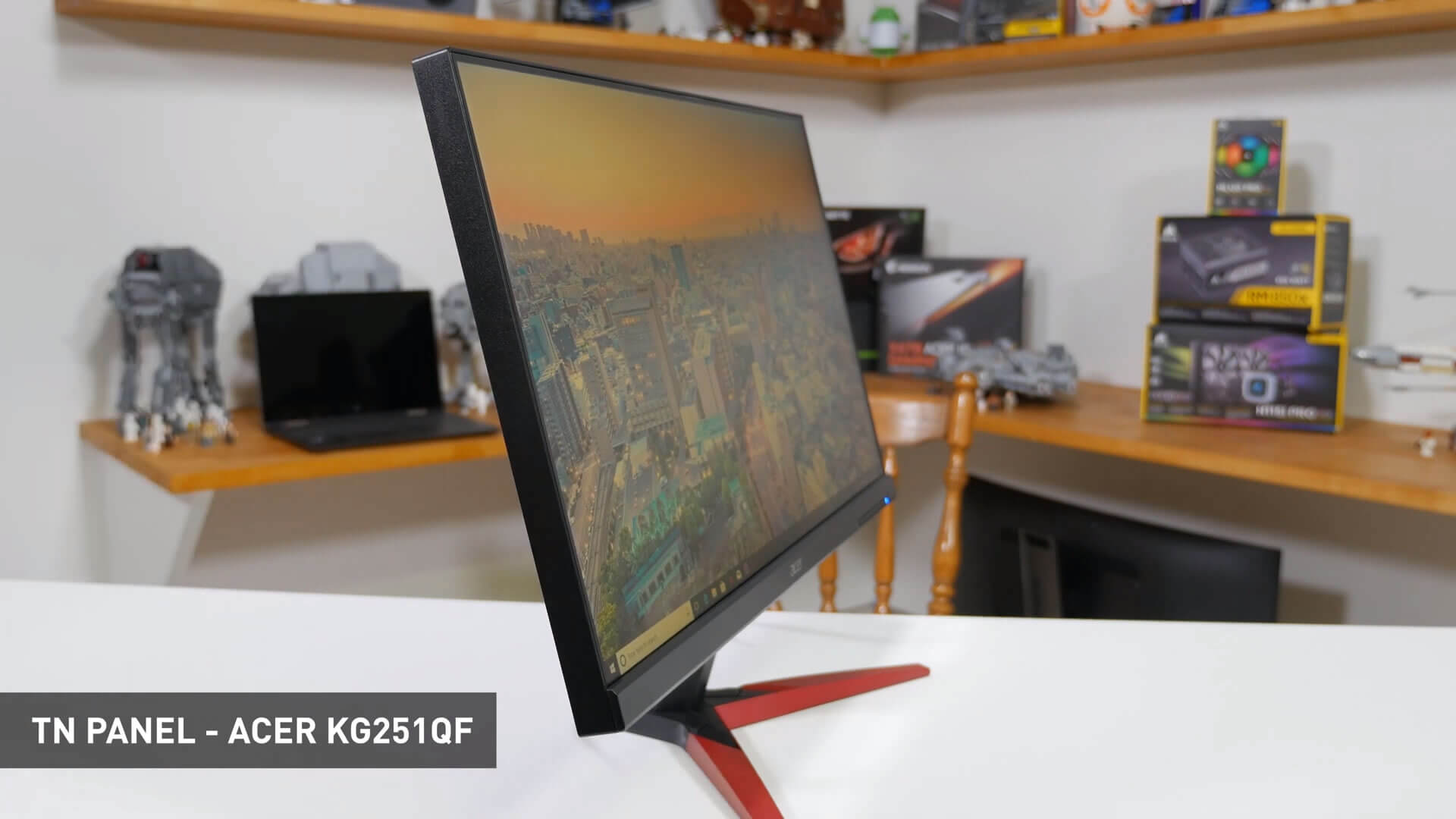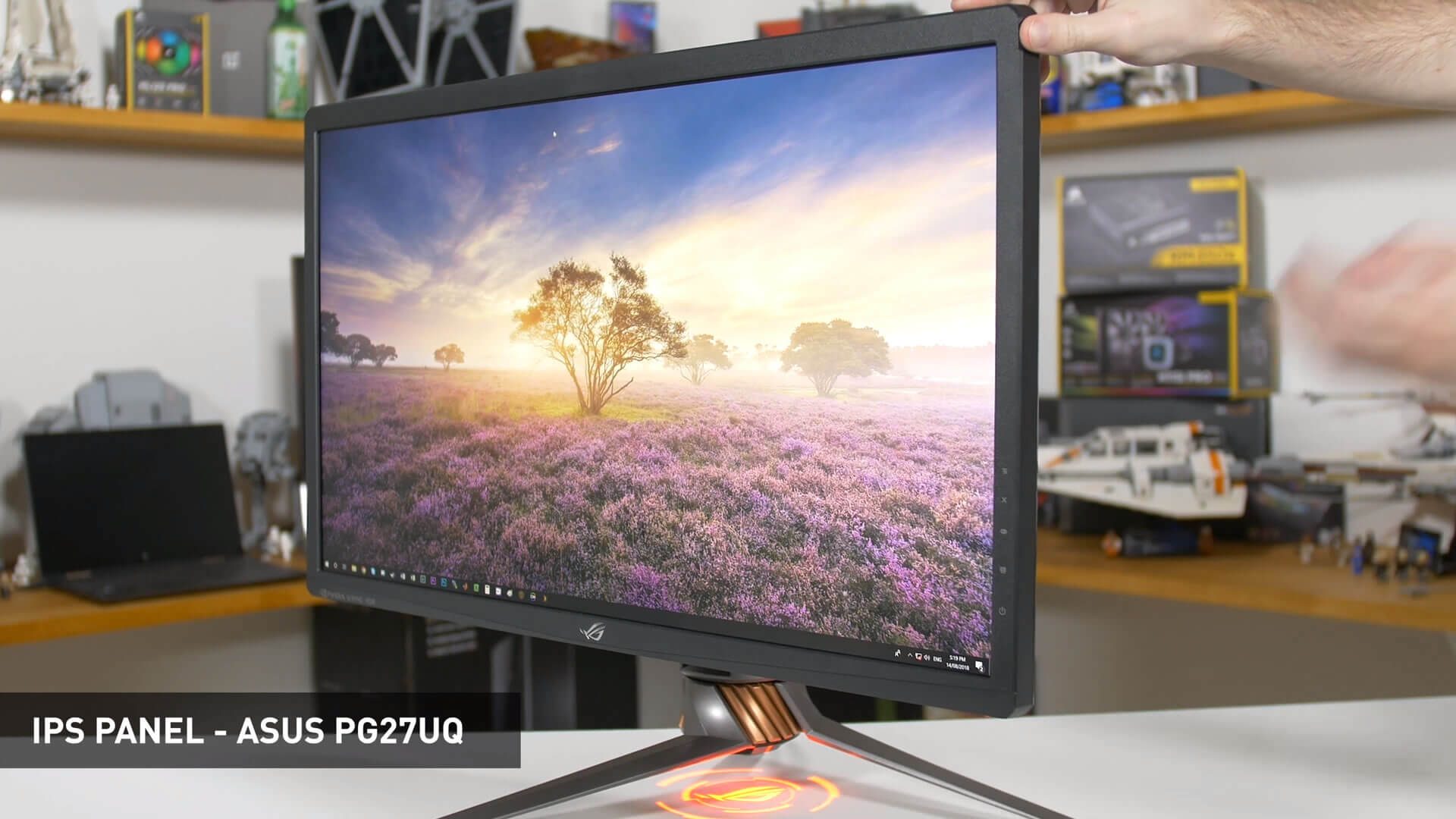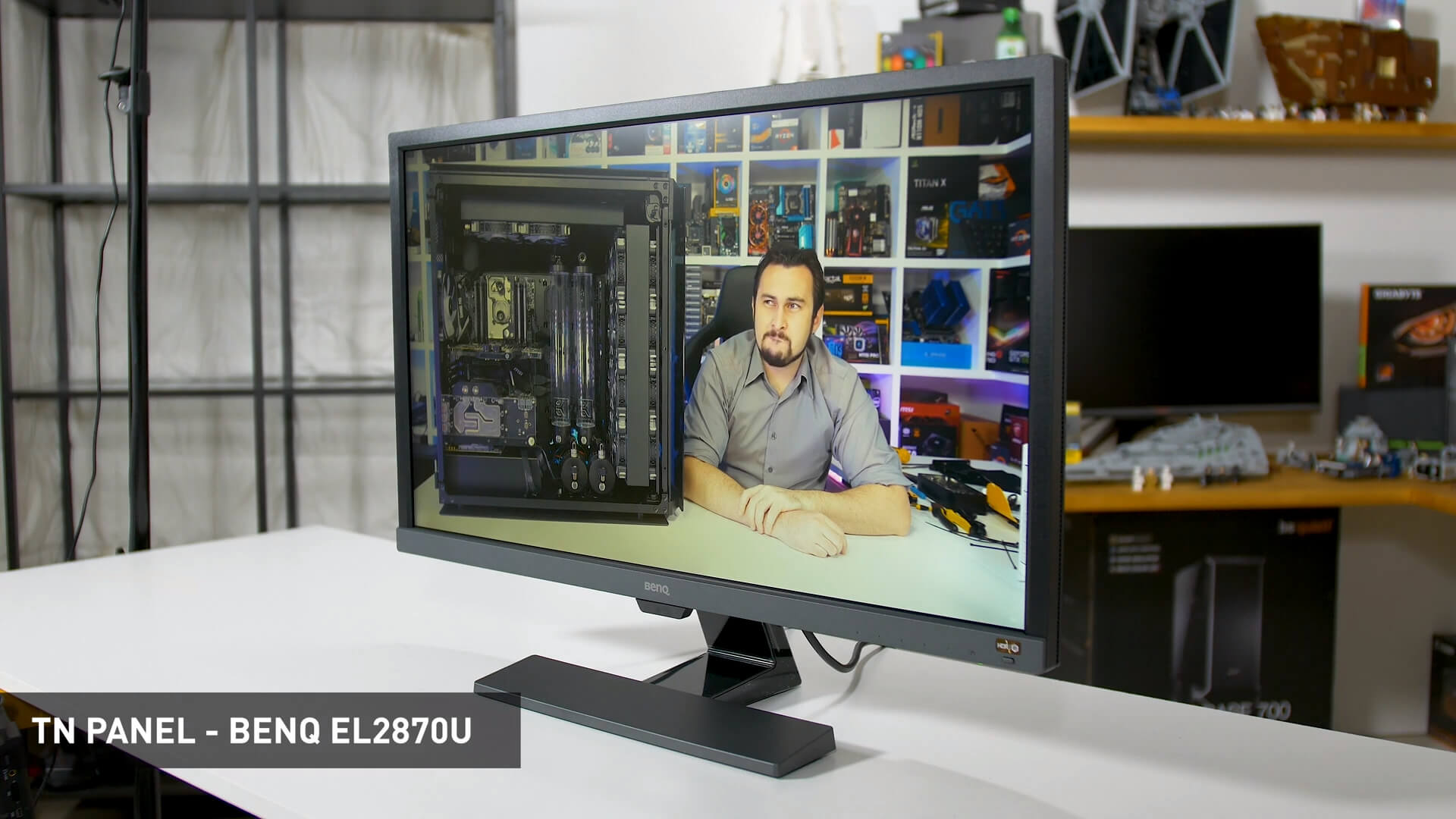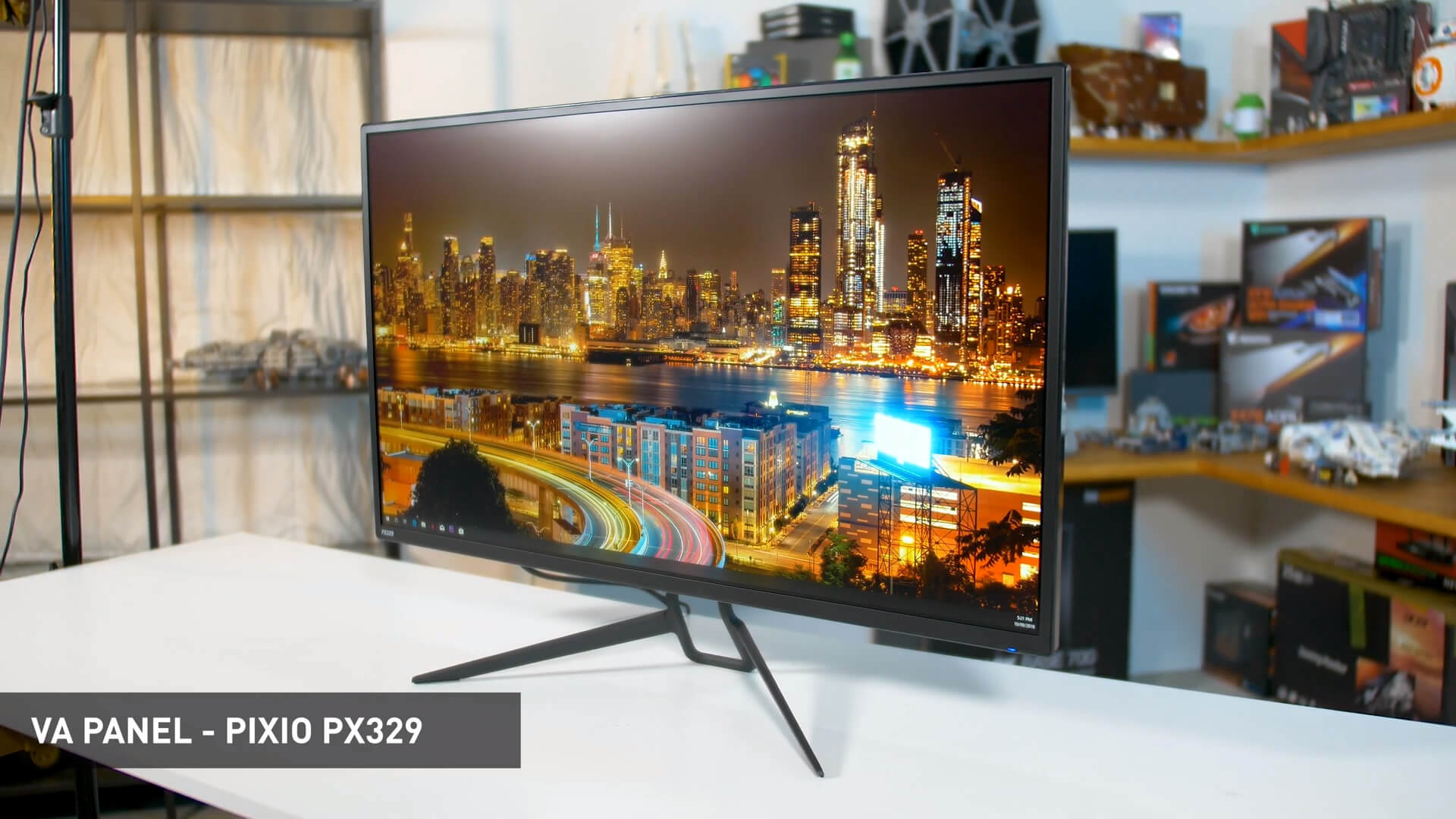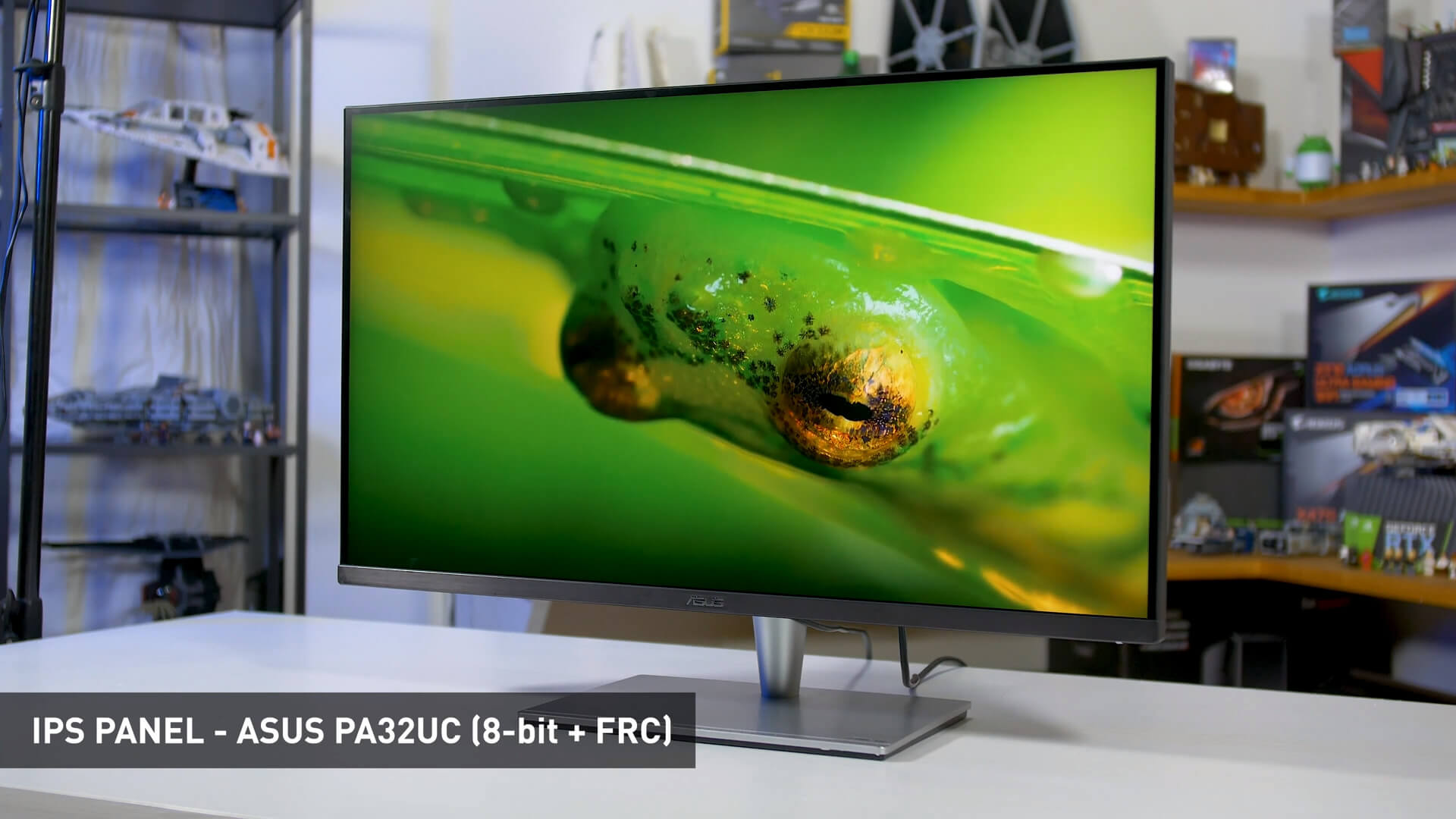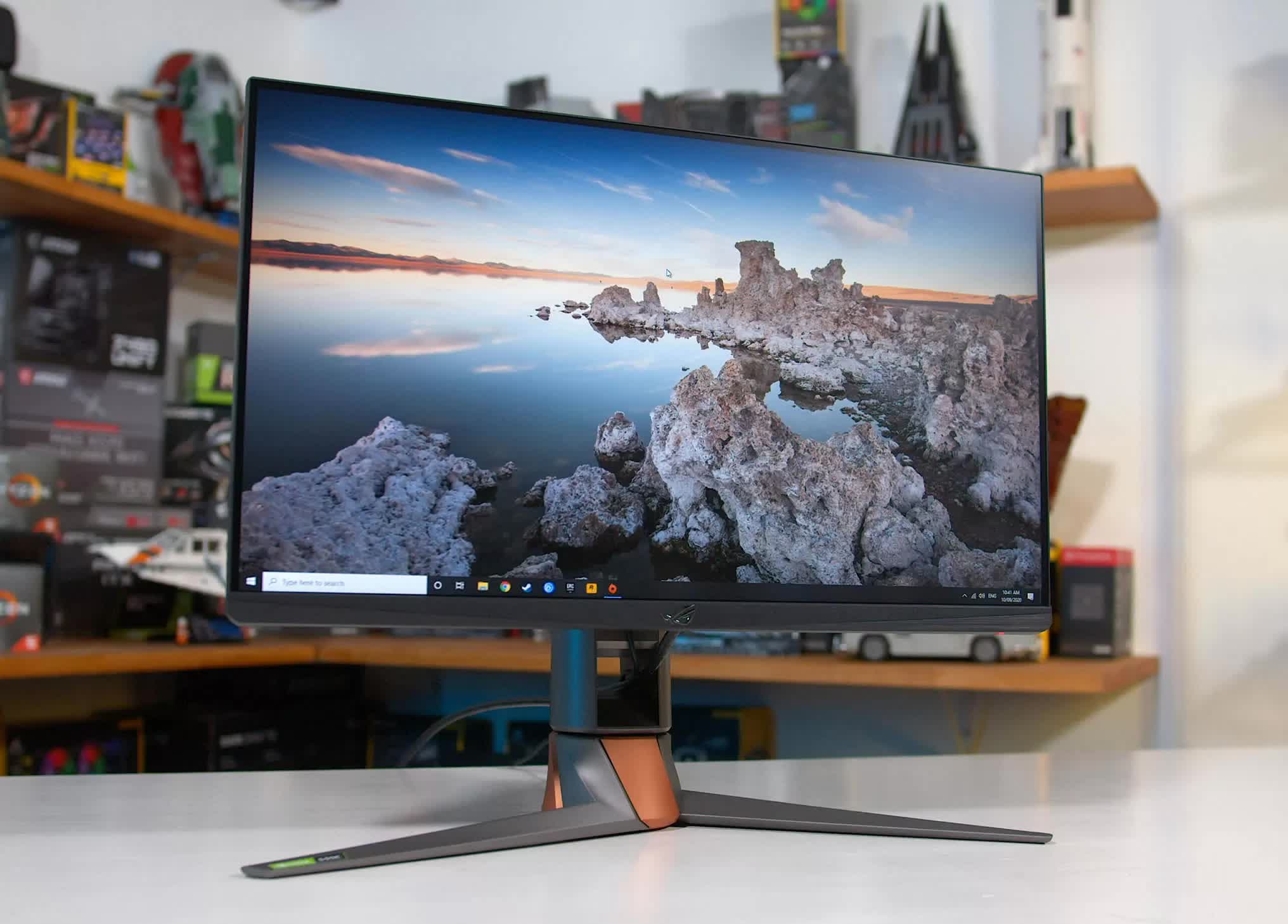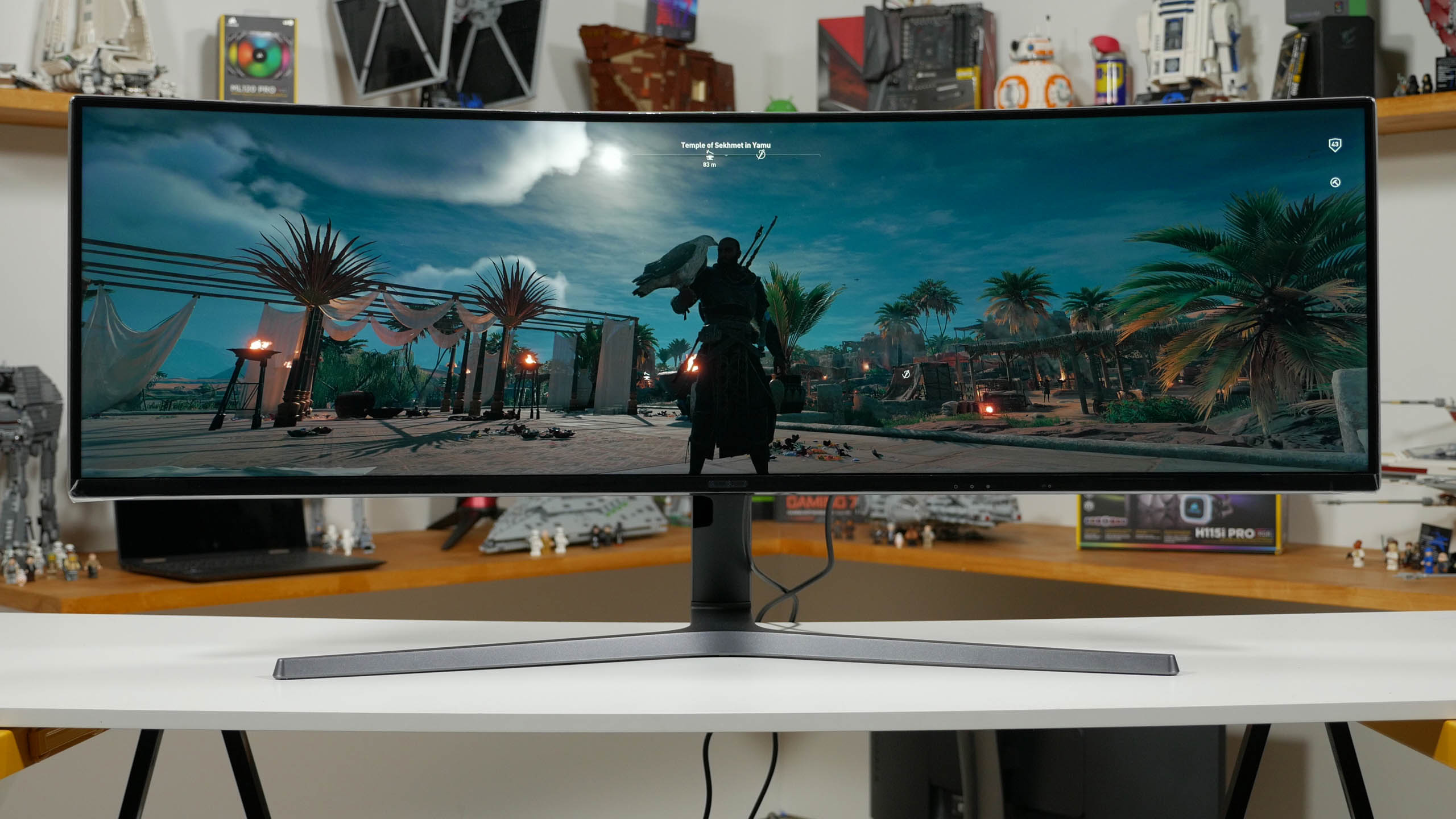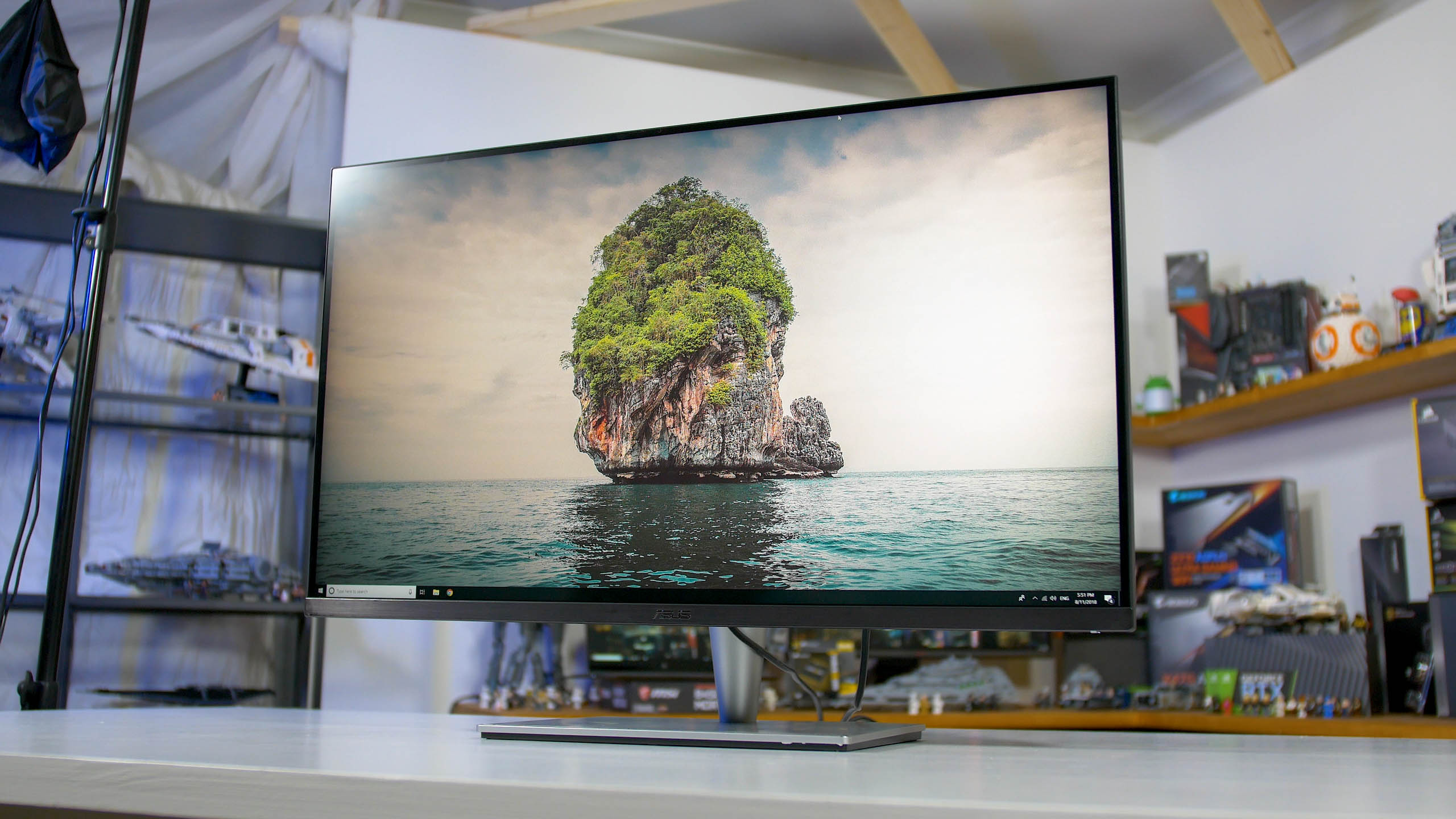Update: This is our original explainer about display technologies. While most of the information below remains accurate to this day, we've seen the introduction of much faster IPS displays as well as a revolutionary updates to VA panels, particularly from Samsung Odyssey gaming monitors. We've also since tested over 100 monitors, so we have a lot more insights to share about performance.
Read the updated explainer:
TN vs. VA vs. IPS, What's the Difference in 2021?
By far the most common types of display panels used on PC monitors are TN, IPS and VA. We're sure you've heard these terms before if you've researched monitors to purchase, and to be clear, the type of panel is a key piece of information that reveals a lot about how the monitor will behave and perform.
A brief overview is in order, before we focus on the individual characteristics of each technology and how they perform.
TN is the oldest of the LCD technologies and it stands for twisted nematic. This refers to the twisted nematic effect, which is an effect that allows liquid crystal molecules to be controlled with voltage. While the actual workings of a TN-effect LCD are a little more complicated, essentially the TN-effect is used to change the alignment of liquid crystals when a voltage is applied. When there is no voltage, so the crystal is "off," the liquid crystal molecules are twisted 90 degrees and in combination with polarization layers, allow light to pass through. Then when a voltage is applied, these crystals are essentially untwisted, blocking light.
VA, stands for vertical alignment. As the name suggests, this technology uses vertically aligned liquid crystals which tilt when a voltage is applied to let light pass through. This is the key difference between IPS and VA: with VA, the crystals are perpendicular to the substrates, while with IPS they are parallel. There are several VA variants, including Samsung's SVA and AU Optronics AMVA.
IPS stands for in-plane switching and, like all LCDs, it too uses voltage to control the alignment of liquid crystals. However unlike with TN, IPS LCDs use a different crystal orientation, one where the crystals are parallel to the glass substrates, hence the term 'in plane'. Rather than 'twisting' the crystals to modify the amount of light let through, IPS crystals are essentially rotated, which has a range of benefits.
There are many IPS variants on the market, with each of the three big LCD manufacturers using a different term to describe their IPS-type technology. LG simply calls their tech "IPS" which is easy for everyone. Samsung uses the term PLS or plane-to-line switching, while AU Optronics uses the term AHVA or advanced hyper viewing angle. AHVA shouldn't be confused with regular VA displays, it's an annoying and confusing name in my opinion, but AHVA is an IPS-like technology. Each of LG's IPS, Samsung's PLS and AUO's AHVA are slightly different but the fundamentals are rooted in IPS.
So in summary, TN panels twist, IPS panels use a parallel alignment and rotate, while VA panels use a vertical alignment and tilt. Now let's get into some of the performance characteristics and explore how each of the technologies differ and in general, which technology is better in any given category.
Viewing Angles
By far the biggest difference between the three technologies is in viewing angles. TN panels have the weakest viewing angles, with significant shift to color and contrast in both the horizontal and especially vertical directions. Typically viewing angles are rated as 170/160 but realistically you'll get pretty bad shifts when viewing anywhere except for dead center. Higher-end TNs tend to be somewhat better but overall this is a big weakness for TNs.
VA and IPS panels are both significantly better, with IPS being the best overall for viewing angles. 178/178 viewing angle ratings are a realistic reflection of what you can expect with an IPS, you won't get much shift in colors or contrast from any angle. VAs are good in this regard but not as good as IPS, mostly due to contrast shifts at off-center angles. With VAs and especially TNs having some color and contrast shifts when viewing at angles, they're not as well suited to color-critical professional work as IPS panels, which is why you see most pro-grade monitors sticking to IPS.
Brightness & Contrast
In terms of brightness there's no inherent differences between the technologies because the backlight, which determines brightness, is separate to the liquid crystal panel. However there are significant differences to contrast ratios, and this an area most people look at when determining which panel type they want.
Both TN and IPS panels tend to have a contrast ratio around 1000:1, although in my testing I have noted some differences. TN panels tend to have the lowest contrast ratios when calibrated, with an entry-level panel sitting between 700:1 and 900:1 and good panels pushing up to that 1000:1 mark. IPS has a larger range, I've seen some as low as 700:1 like TNs, however the very best tend to push up higher than TN, with 1200:1 as the upper range for desktop monitors and some laptop-grade displays reaching as high as 1500:1.

Neither TN nor IPS get to the range of VA though. Entry-level VA panels start with a contrast ratio of 2000:1 from those that we've tested, with the best easily exceeding 4500:1, although 3000:1 is a typical figure for most monitors.
TVs make extensive use of VA panels and there contrast ratios can be even higher. It's not unusual to see over 6000:1. So if you want deep blacks and high contrast ratios, you'll need to go with something VA.
While IPS panels tend to be a middle ground for contrast they do suffer from a phenomenon called "IPS glow," which is an apparent white glow when viewing dark imagery at an angle. The best panels exhibit minimal glow but it's still an issue across all displays of this type.
Color Quality
Color quality is another difference many people cite between TN displays and other display panels in particular. And this can be split into two categories: color depth or bit depth, and color gamut.
In both of these regards, TN panels tend to fall on the weaker end of the scale. Many TN displays, in particular entry-level models, are only natively 6-bit and use frame rate control, otherwise called FRC or dithering, to achieve standard 8-bit output. 6-bit panels are prone to color banding, while native 8-bit panels have smoother color gradients and therefore better color output.
Not all TN panels are 6-bit. The top-end TNs are native 8-bit, but it's safe to say most TNs will only be native 6-bit, even today. If you are after a native 8-bit display, you'll need to go with either IPS or VA, where many more panels come native 8-bit.
While there are still 6-bit entry-level IPS and VA panels, pretty much all mid-range to high-end options are 8-bit.
As for native true 10-bit, typically you'll need to look for an IPS panel, which make up the majority of native 10-bit panels. Some VA panels can do it, but they are rare. Most displays you purchase that claim to be 10-bit, are actually 8-bit+FRC, with only high-end professional-grade monitors offering a native 10-bit experience.
Color Gamut
This is another area where VA and IPS provide a superior experience. The best TN panels tend to be limited to sRGB, or in the case of the worst entry-level panels, don't even cover the entirety of the sRGB gamut. Wide-gamut TN panels do exist, but they are rare.
VA panels typically start with full sRGB coverage as a minimum, and depending on the panel can push higher. VAs that use a quantum dot film, typically from Samsung, offer higher gamuts, around the 125% sRGB or 90% DCI-P3 mark. Most of the wide gamut VA monitors we've tested fall between 85 and 90% DCI-P3 coverage, which is a decent result, though the best can approach 95% or higher.

With IPS panels, there is the largest variance. Entry-level IPS displays tend to offer 95% sRGB coverage or less, while the majority stick to full sRGB coverage. Then with high-end displays, usually for professionals, it's not unusual to see full DCI-P3 and Adobe RGB coverage. Of all the wide gamut IPS displays I've tested, the lowest DCI-P3 coverage I've seen has been 93%, with over 95% a typical figure. This makes IPS the best technology for wide gamut work.
Refresh Rates
Throughout most of this discussion we've been talking about TN as the worst of the three technologies. So far, it has the worst color reproduction, contrast ratios and viewing angles. But it does have one key advantage, and that comes in the form of speed. TN panels have historically been the best for both refresh rates and response times, however that trend is slowly changing for the better.
Not long ago, we argued that only with a TN panel it was possible to hit 240 Hz, doing so at 1080p and later up to 1440p. Most recently, however we've seen IPS monitors hit the highest mark ever for a consumer-grade gaming monitor at 360Hz, and do so very convincingly. We're sure other monitors will follow but as of writing, the Asus ROG Swift PG259QN can deliver both the fastest response times and an accurate color experience using an IPS panel.
More mainstream monitors using IPS panels tend to range from the regular 60Hz for productivity, up to 165 Hz and 240 Hz depending on the market they're aimed at. VA panels top out at around 240 Hz at the moment.
Most IPS displays, especially high-grade options for professionals, as well as entry-level office monitors, are either 60 or 75 Hz. Meanwhile, a significantly larger number of VA panels across a wider range of sizes and resolutions are high-refresh, while the big selling point of TN is its super high refresh capabilities.
Response Times
Another major consideration is response times, which govern the level of ghosting, smearing and overall clarity of a panel. Early IPS and VA panels were very slow, however this has improved a lot with modern panels, so the differences between the three technologies aren't as pronounced as they once were. TN still holds an advantage here.
Most TN panels have a rated transition time of 1ms, or even lower with some recent releases. Actual grey to grey averages we've measured for TN panels tend to be in the 2-3 ms range when overdrive is factored in, which makes TN the fastest technology.

IPS panels are next in terms of speed, though as tends to be the case with IPS, there is a wide variance between the best and worst of this type. High-end IPS monitors, typically those with high refresh rates, can have a transition time as fast as 3ms. Compared to the best TN panels, this still makes IPS slower. However entry-level IPS panels or those without overdrive sit closer to the 10ms range, while mid-tier options tend to occupy the 5 to 7 ms bracket.
VA panels are consistently the slowest of the three types, but again, high-end gaming monitors have been pushing this further on every generation. The absolute fastest VA panel we've measured so far has a 4ms response time which is very impressive, though more typical numbers are between 8 and 10 ms for gaming monitors. VA panels also tend to be less consistent with their transitions; some individual transitions can be fast, while others very slow, whereas IPS panels tend to hover more around their overall grey to grey average.
While a lot of people are unlikely to spot the difference between an 8ms VA panel and a 5ms IPS, TN panels overall tend to be noticeably clearer in motion, but that gap is closing with every generation. The slowness of VA panels also limits their real world refresh rate: a 144 Hz panel that only manages a 9ms response time, is actually delivering an image most equivalent to a 110 Hz panel. Whereas most 144 Hz IPS panels can transition faster than the 6.94ms refresh window, leading to a true 144 Hz experience. So that's something to consider.
Wrap Up
As a quick summary, TN panels are the fastest and have the highest refresh rates, however they have the worst viewing angles by far, as well as weak color performance and typically the lowest contrast ratios. TNs are typically used for ultra-fast gaming displays, as well as budget class displays, for both desktop monitors and laptops.
IPS is a middle-ground technology. They typically have the best color performance and viewing angles, mid-tier response times and refresh rates, along with mid-tier black levels and contrast ratios. Due to its top-end color output, IPS panels are the go-to choice for professionals, but you'll also find them in entry-level displays, office monitors, most laptops and a handful of gaming monitors.
VA panels are the slowest of the three, but have the best contrast ratio and black levels by far. Color performance isn't quite at the level of IPS, but they still offer a significantly better experience than TN in this regard.
With response times for the best modern VAs approaching the level of a typical IPS, along with broad support for high refresh rates, VA monitors are commonly used for gaming monitors. Entry-level VAs also tend to be superior to entry-level TN and IPS panels, though you won't find VA used in laptops.
There's no right answer to which monitor technology is best, because all have their strengths and weaknesses which is why all three coexist on the market today. However if you want our recommendation, we tend to gravitate towards VA panels for most buyers, especially gamers and those after something entry-level. Creative professionals should be looking exclusively at IPS monitors, while those after something dirt cheap or ultra high refresh for competitive gaming should opt for TN, although superior latest-gen IPS and VA offerings are finally matching or even beating the best of TN in some regards.


